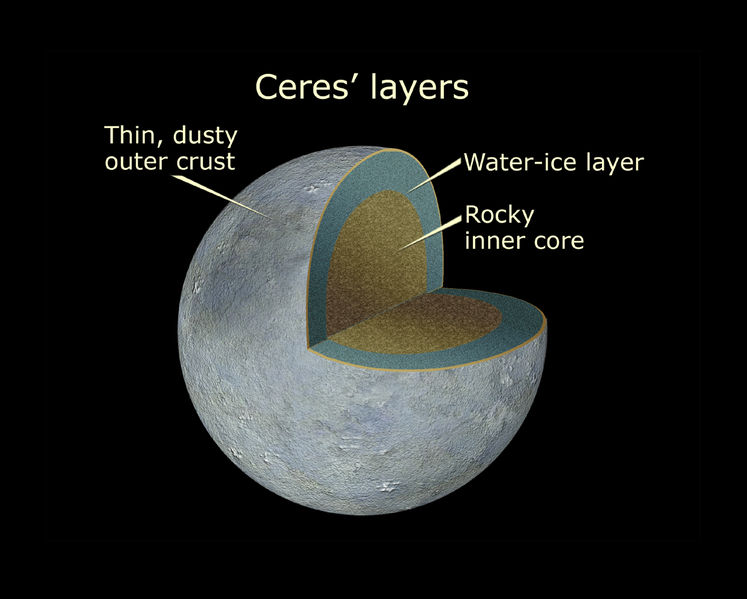Plik:Ceres Cutaway.jpg

Rozmiar podglądu – 747 × 599 pikseli. Inne rozdzielczości: 299 × 240 pikseli | 598 × 480 pikseli | 957 × 768 pikseli | 1200 × 963 pikseli.
Rozmiar pierwotny (1200 × 963 pikseli, rozmiar pliku: 358 KB, typ MIME: image/jpeg)
Historia pliku
Kliknij na datę/czas, aby zobaczyć, jak plik wyglądał w tym czasie.
| Data i czas | Miniatura | Wymiary | Użytkownik | Opis | |
|---|---|---|---|---|---|
| aktualny | 19:09, 9 wrz 2005 |  | 1200 × 963 (358 KB) | Startaq | |
| 15:46, 9 wrz 2005 |  | 800 × 600 (37 KB) | Vesta~commonswiki | {{Information| |Description = Cutaway view of asteroid 1 Ceres. Observations of 1 Ceres, the largest known asteroid, have revealed that the object may be a "mini planet," and may contain large amounts of pure water ice beneath its surface. The observation |
Lokalne wykorzystanie pliku
Poniższa strona korzysta z tego pliku:
Globalne wykorzystanie pliku
Ten plik jest wykorzystywany także w innych projektach wiki:
- Wykorzystanie na als.wikipedia.org
- Wykorzystanie na ast.wikipedia.org
- Wykorzystanie na bg.wikipedia.org
- Wykorzystanie na de.wiktionary.org
- Wykorzystanie na en.wikiversity.org
- Wykorzystanie na fi.wikipedia.org
- Wykorzystanie na fr.wikipedia.org
- Wykorzystanie na hu.wikipedia.org
- Wykorzystanie na id.wikipedia.org
- Wykorzystanie na ko.wikipedia.org
- Wykorzystanie na nds.wikipedia.org
- Wykorzystanie na nl.wikipedia.org
- Wykorzystanie na nl.wikibooks.org
- Wykorzystanie na no.wikipedia.org
- Wykorzystanie na pnb.wikipedia.org
- Wykorzystanie na pt.wikipedia.org
- Wykorzystanie na ro.wikipedia.org
- Wykorzystanie na tl.wikipedia.org
- Wykorzystanie na ug.wikipedia.org
- Wykorzystanie na ur.wikipedia.org
- Wykorzystanie na zh.wikipedia.org









